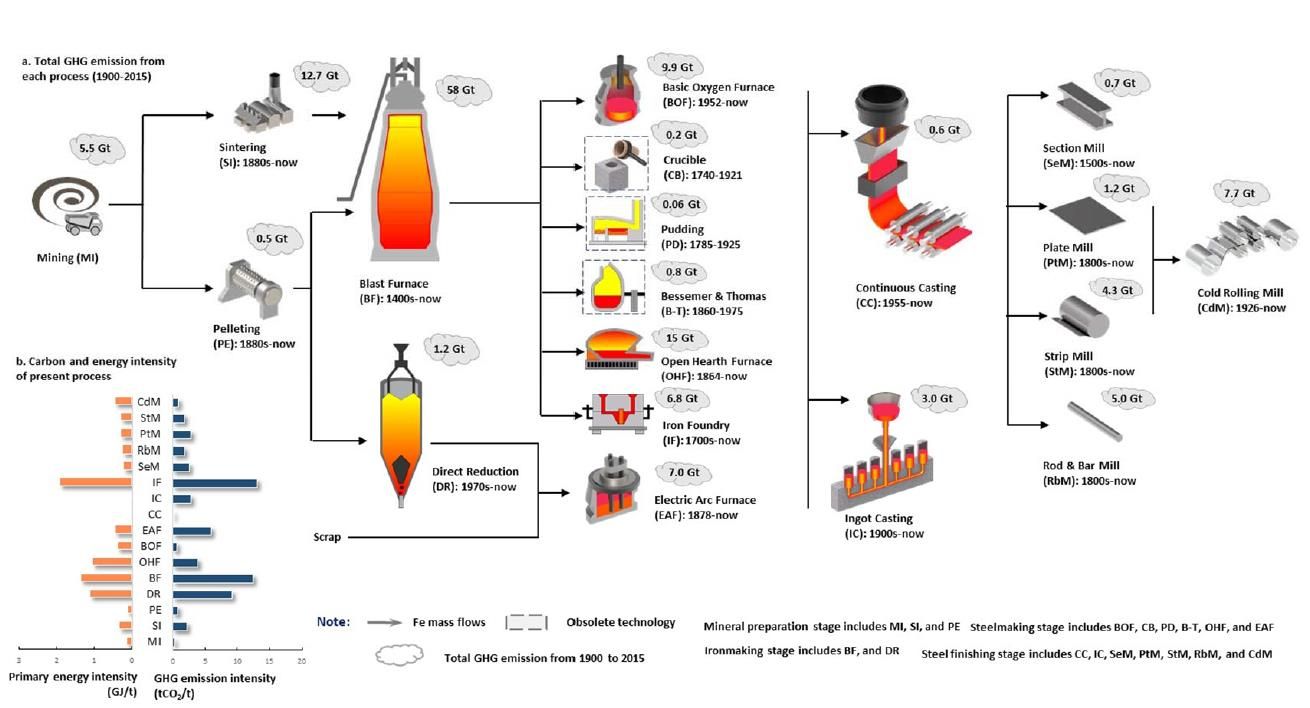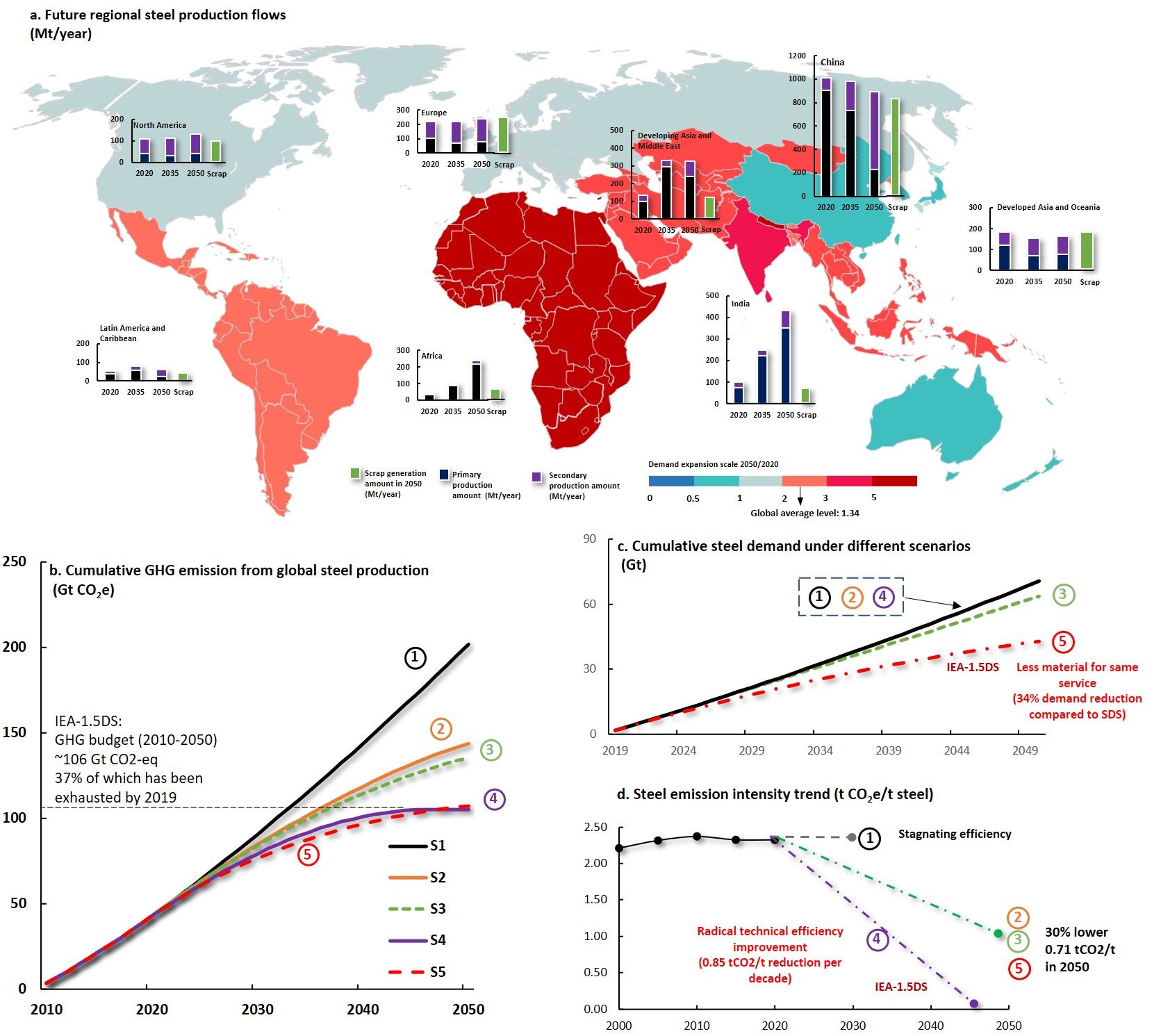Wang, Peng; Ryberg, Morten*; Yang, Yi; Feng, Kuishuang; Kara, Sami*; Hauschild, Michael; Chen, Wei-Qiang*
Nature Communications 2021 12: 2066. DOI: 10.1038/s41467-021-22245-6
Abstract
Steel production is a difficult-to-mitigate sector that challenges climate mitigation commitments. Efforts for future decarbonization can benefit from understanding its progress to date. Here we report greenhouse gas emissions from global steel production over the past century (1900-2015) by combining material flow analysis and life cycle assessment. We find that ~45 Gt steel was produced in this period leading to emissions of ~147 Gt CO2-eq. The historical improvement in process efficiency (~67%) was offset by a 44-fold increase in annual steel production, resulting in a 17-fold net increase in annual emissions. Despite regional technical improvements, the industry’s decarbonization progress stagnated after 1995 mainly due to expansion of emerging production flows with high carbon intensity. This raise concerns on the expected demand expansion in emerging economies, which may jeopardize steel industry’s prospects for following 1.5°C emission reduction pathways. This warrants urgent implementations of regionally specific joint supply- and demand-side mitigation measures.
Steel production technologies and their total GHG emissions from 1900 to 2015.

Feasibility of material and technical efficiency improvement scenarios to avoid the exhaustion of steel-related 1.5DS carbon budgets.
